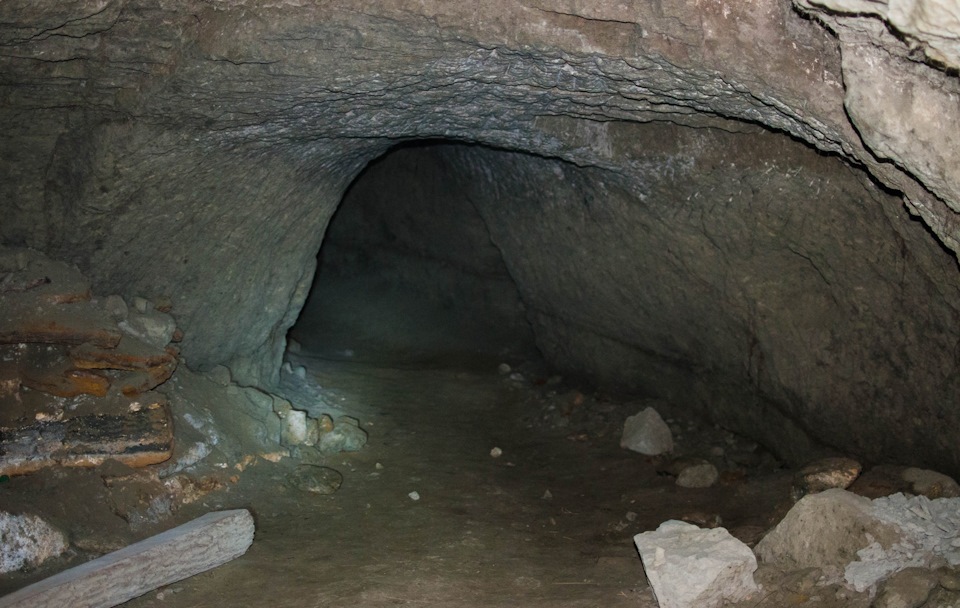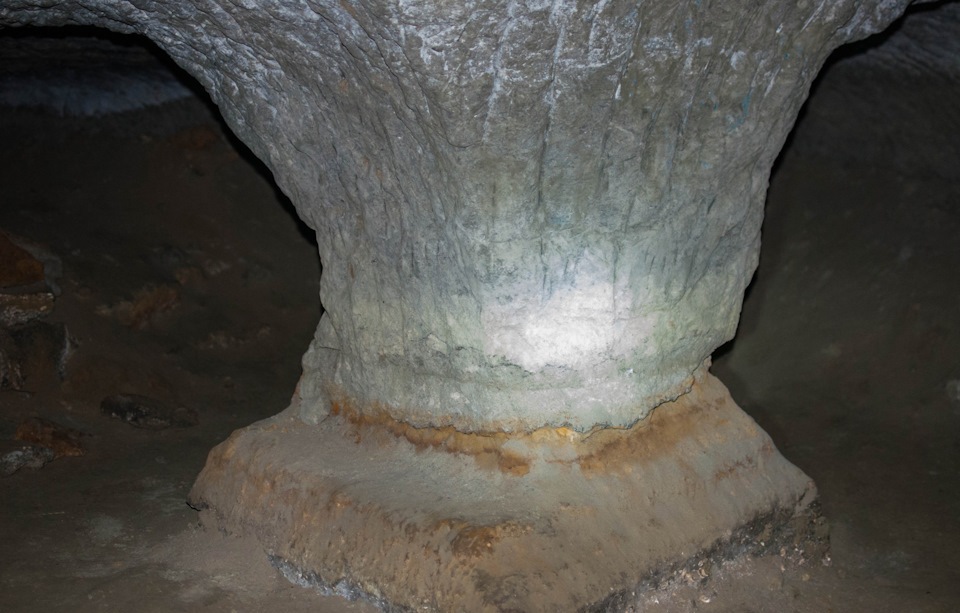Rising 90 metres above the Volga reservoir, the Urakov Hillock is primarily famous for its man-made caves. These caves date back to the 18th-19th centuries. The Lower Volga largest cave labyrinth is located here. Its total length is 800 metres.
According to the experts, the Urakov Hillock caves are connected with Volga Germans, who lived in the Volgograd region in17th-19th centuries. The Germans used those caves to excavate the rock, which was further used for making millstones. Horizontal entrances to the adits can be seen from the Volga river. An adit is up to 0.5 metre high. The walls of the adits have preserved the marks left after rock excavations. The caves are dug in the soft green-to-grey sandstone which is rich in fauna (bivalves and helixes). The wet sandstone is easy to work with, but when it dries up it becomes solid.
It is worth mentioning that a millstone made of this sandstone was found not far from Elton lake. It proves that the millstones, made by Volga Germans, were in demand and the Urakov Hillock caves were used as adits.
Each year regular landslides shorten the length of the caves. It is very dangerous to come inside a cave. There are a number of places where special wooden supports are installed under the passage vaults.



